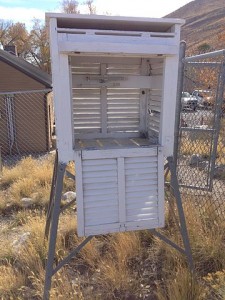I am often asked about the difference between temperatures measured from surface-based instruments and satellite-based temperature measurements. This article in The Guardian (if you can get past the politics) does a good job of explaining the difference between the two ways of measuring global temperature and some of the shortfalls of each approach.
The biggest advantage to satellite measurements is that they cover much more of the globe than ground-based measurements since so much of the ocean is not covered by ship or buoy measurements. The weakness of satellite-based temperature measurements is that they have a much shorter record than traditional thermometers. Also, because satellite instruments are updated frequently and tend to drift over time, making comparisons between one satellite and the next can be difficult. Satellites also don’t measure temperature directly but estimate it over the full depth of the atmosphere using radiative calculations. That means they are sensing not only the warming at the surface but also cooling higher up in the atmosphere as heat is trapped near the ground, which reduces the total temperature trend of the full layer.
One argument in favor of ground-based thermometers is that we live at the surface of the earth, not up in the sky, and so ground-based measurements are more representative of the conditions we actually experience. However, ground-based measurements have their own problems. Instrument changes and changes in how the temperatures are taken have added some artificial changes to the raw thermometer data, requiring climatologists to adjust the data to account for these variations. Bad siting of some stations has also increased errors in measurement at individual stations, so most climatologists would never use a single station to identify a long-term trend across a whole region.
In addition, urbanization and the effects of city “heat islands” have also helped increase the temperatures near large city centers. But even if you look at just the most rural stations with few instrument changes that we have, the rise in temperature over time is clearly visible. And since the population as a whole is migrating away from rural areas into cities, the changes of temperature associated with the heat islands may not do too bad a job at telling us how our “local” climate might be changing, at least as far as we are experiencing it ourselves.
Finally, when you consider all the data, satellite and ground-based temperatures agree more than they differ on trends in temperature over time. That agreement of trends from both kinds of sensors gives us confidence that the increases in global climate we are seeing over time are not artificially produced by bad data (from either surface or satellites) but represent real change in the global climate system.
